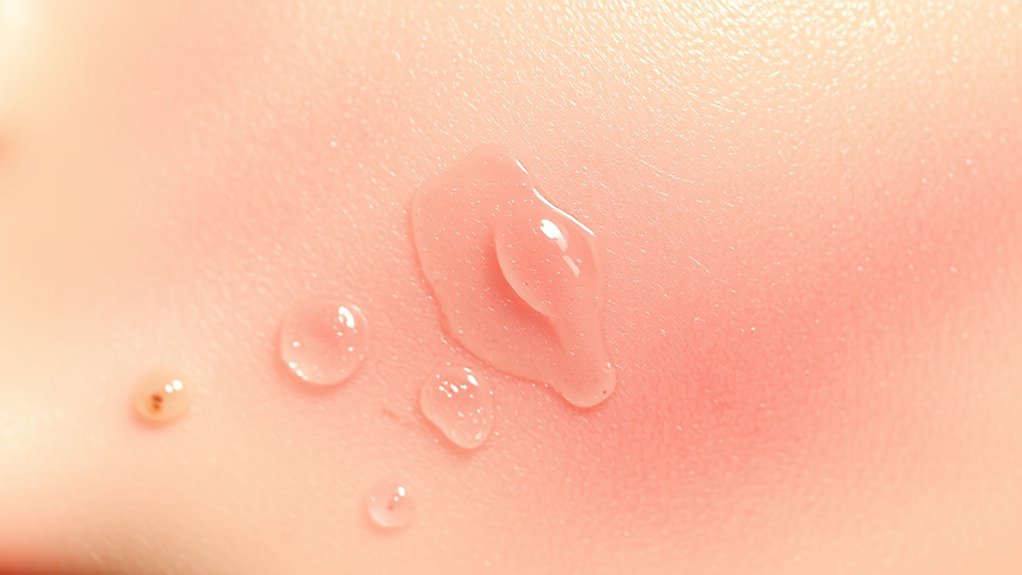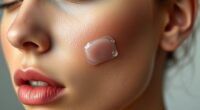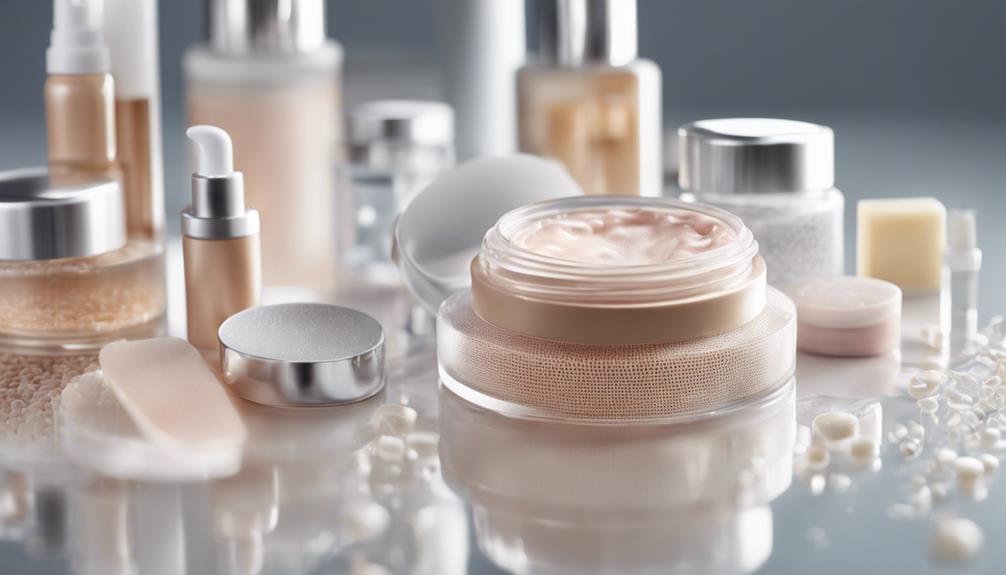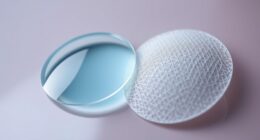Pimple patches usually stay on for 4 to 8 hours for the best results, though some can last up to 24 hours for stubborn blemishes. The stickiness of the patch is essential; it keeps the patch securely in place and forms a barrier against contaminants. To guarantee effectiveness, make sure your skin is clean and dry before applying. Keep an eye out for changes in color or texture—those can indicate when it’s time to remove the patch. There’s more you can learn about maximizing their effectiveness.
Key Takeaways
- Pimple patches typically last 4 to 8 hours but can be worn overnight for up to 12 hours.
- Some stubborn blemishes may require patches to stay on for up to 24 hours.
- A patch turns white or cloudy when it has absorbed impurities, indicating it’s time to remove it.
- The patch’s adhesive properties ensure a secure fit, crucial for effective treatment and protection against contaminants.
- Environmental conditions, such as humidity, can affect the stickiness and overall wear time of the patch.
Understanding Pimple Patch Duration
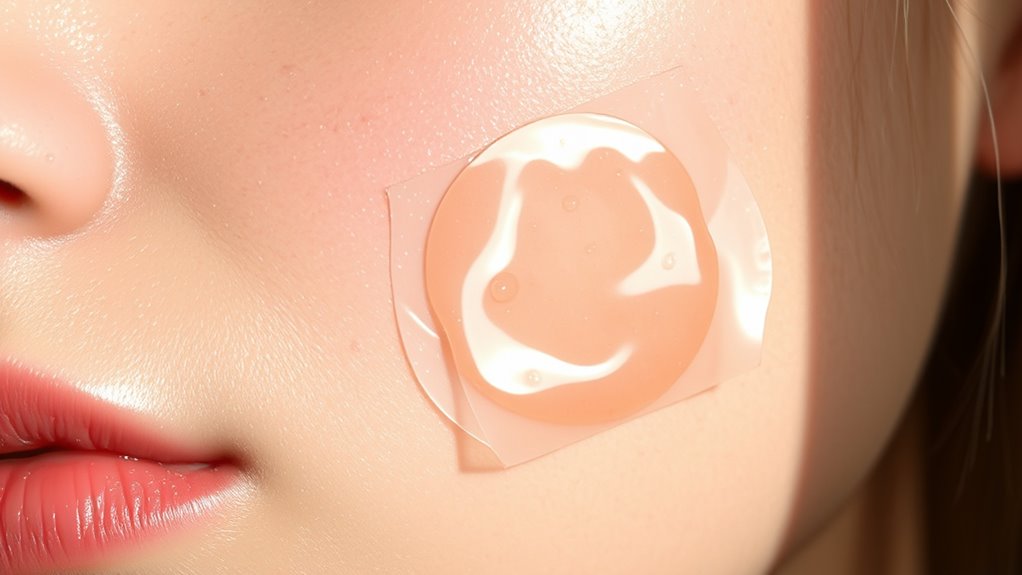
When you apply a pimple patch, understanding how long to keep it on can greatly impact its effectiveness. For best results, aim to wear the patch for 4 to 8 hours. Many people find that leaving it on overnight, up to 12 hours, allows for uninterrupted treatment. If you’re dealing with stubborn blemishes, some patches can stay on for up to 24 hours. You’ll know the patch is working when it turns white or cloudy, indicating it’s absorbed impurities. Be mindful to remove the patch if it starts to peel off since it won’t be effective anymore. Hydrocolloid patches are particularly effective on whiteheads, making them a great choice for targeting blemishes. Always consider your skin type, especially if you have sensitive skin, which may require shorter wear times.
Factors Affecting Patch Wear Time
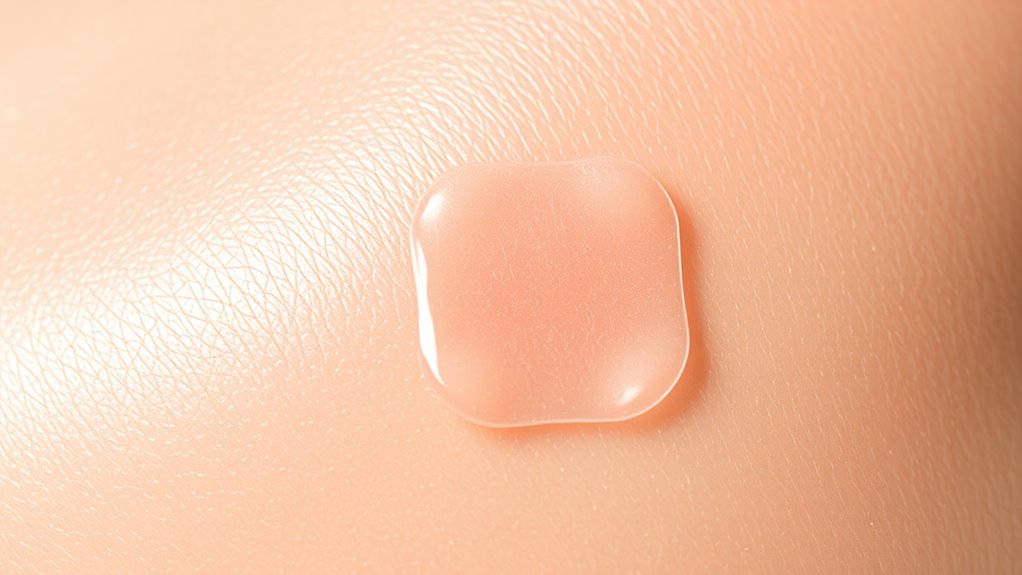
Understanding the factors that affect patch wear time can considerably enhance the effectiveness of your treatment.
The type of patch you choose plays a significant role; hydrocolloid patches typically stay on for 6-8 hours, while microneedle patches may vary. Additionally, ensuring a clean, dry face before application maximizes the patch’s adherence and effectiveness.
The choice of patch significantly impacts wear time; hydrocolloid patches last 6-8 hours, while microneedle patches vary.
Your skin type also matters—oily skin requires thorough cleaning for better adhesion, while sensitive skin might need shorter wear times. Blemish severity influences wear duration as well; whiteheads are ideal for patches, but cystic pimples may benefit from longer protection.
Environmental conditions like heat and humidity can impact adhesion, and your habits, such as touching the patch frequently, can reduce effectiveness. Following a consistent skincare routine can further optimize your patch experience.
Signs It’s Time to Remove Patches
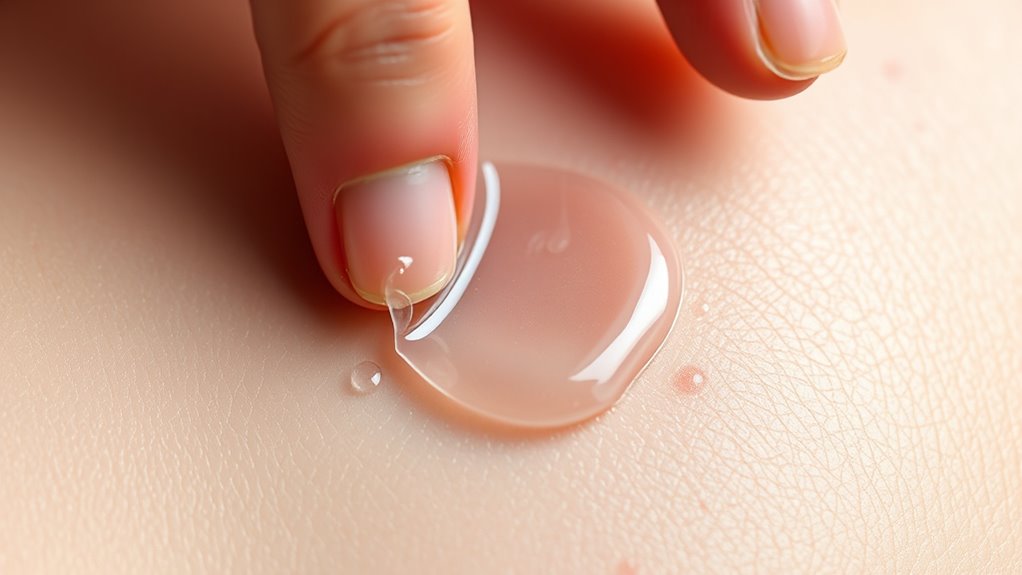
How do you know when it’s time to remove your pimple patch?
Look for a color change; if it turns opaque or white, it’s likely absorbed its maximum capacity. A saturated patch, full of fluids and impurities, signals it’s time for a change. If the patch starts to peel off or loses its stickiness, it’s no longer effective. Most patches should be worn for 6 to 8 hours, with overnight use extending this to 8 to 12 hours. Noticeable improvement in swelling and redness also indicates it’s time to remove the patch. Additionally, hydrocolloid technology helps create a protective barrier that enhances the healing process. After removal, cleanse the area gently, exfoliate if needed, and apply moisturizer to maintain skin health. If excess fluid remains, consider reapplying a new patch.
The Importance of Adhesive Properties
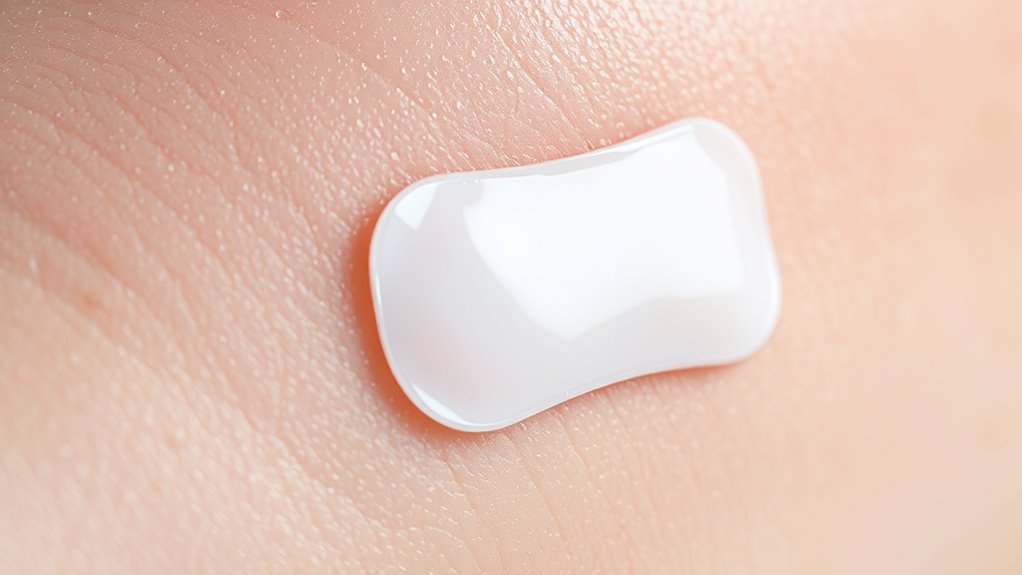
The adhesive properties of pimple patches play an essential role in their effectiveness, as they guarantee a secure fit on your skin while creating a protective barrier. These hydrocolloid patches are designed to absorb excess fluid, maintaining a moist environment that promotes healing. This snug adhesion shields your blemish from external contaminants, reducing the risk of bacterial infection and irritation. Additionally, many patches are effective for stubborn cystic acne, making them a versatile option for different skin concerns. Plus, the comfortable fit makes them ideal for sensitive skin without needing extra tape. Transparency allows you to wear them discreetly. Additionally, the majority of pimple patches, about 76.5% of surveyed US products, contain hydrocolloid, which enhances their ability to effectively treat acne.
Techniques for Effective Patch Application
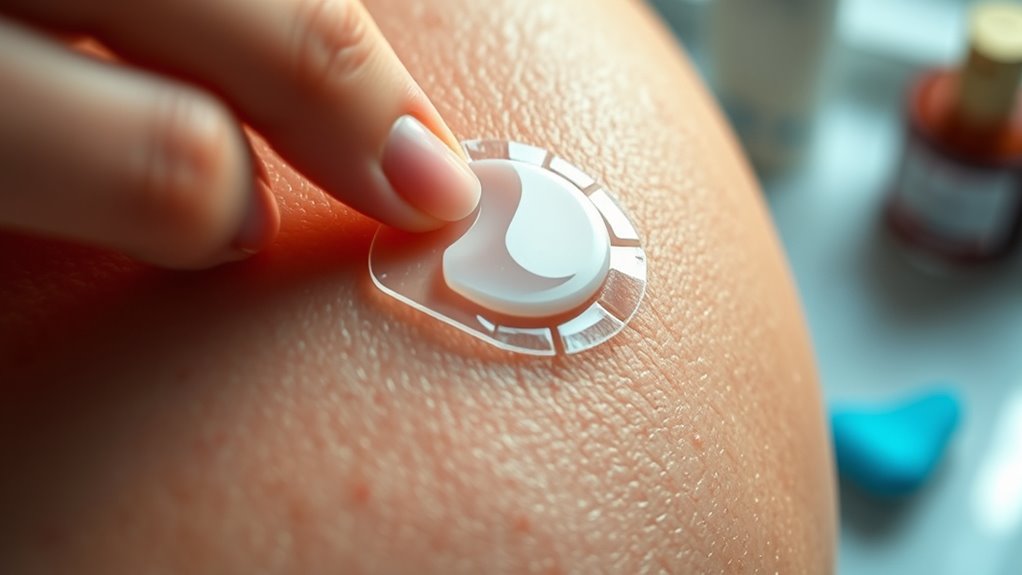
Effective application of pimple patches can greatly enhance their benefits, so following a few simple techniques is key.
Start by cleansing your skin thoroughly and patting it dry to facilitate proper adhesion. Avoid applying patches over dirty or oily areas.
Choose a patch that covers the entire pimple along with a small surrounding area; it shouldn’t be too small or too large. When applying, place the patch flat and hold it for 20 to 30 seconds to activate the adhesive. Keep air bubbles at bay and press gently. Pimple patches are designed for targeted treatment of breakouts, making their proper application even more essential.
Leave the patch on for 6 to 8 hours, and remove it when it turns white or cloudy. Clean the area afterward to prevent bacteria growth.
Benefits of Proper Pimple Patch Use

Proper use of pimple patches can greatly enhance your skincare routine by offering multiple benefits.
They’re convenient and discreet, allowing you to treat blemishes during the day or overnight without drawing attention. By covering pimples, you reduce the urge to pick or squeeze, protecting your skin from irritation and potential scarring.
The patches create a barrier against dirt and bacteria, promoting a clean healing environment. Hydrocolloid patches retain moisture, absorb excess oil, and reduce inflammation, speeding up recovery.
With targeted treatment, they help maintain an even skin tone and minimize redness. Overall, proper use of pimple patches not only supports healing but also enhances your skin’s overall health.
Enhancing Patch Effectiveness With Additional Products
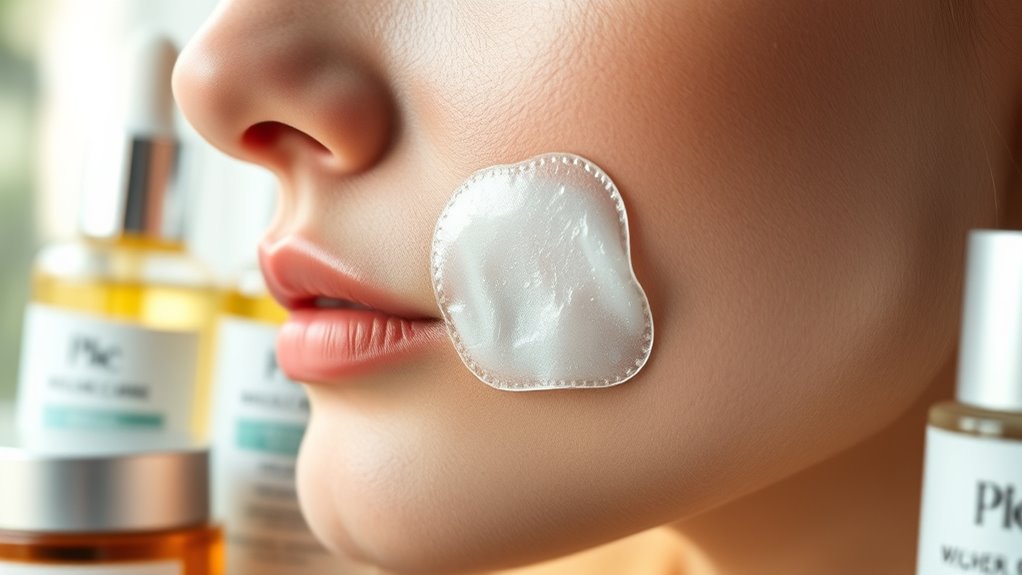
To boost the effectiveness of pimple patches, consider incorporating complementary products into your skincare routine.
Start with gentle cleansers that won’t disrupt your skin barrier. Adding exfoliating products can help prevent clogged pores, promoting quicker healing. Using pimple patches can be especially effective for surface-level breakouts like whiteheads, so applying them early in the breakout process can yield better results.
After cleansing, use calming moisturizers to reduce inflammation and maintain hydration. You might also think about using acne serums with retinoids or azelaic acid alongside your patches for enhanced results.
If you choose medicated patches, look for those containing ingredients like salicylic acid or tea tree oil for extra antibacterial benefits.
Just remember: avoid layering too many products under the patches and guarantee your skin is clean and dry for the best adhesion and effectiveness.
Frequently Asked Questions
Can I Use Pimple Patches on Open Wounds?
You can use pimple patches on open wounds, especially if they’re fresh pimples. They help absorb fluids and protect the area, promoting faster healing.
Just make certain the wound isn’t infected, as hydrocolloid patches aren’t suitable for that. If you’ve popped a pimple, applying a patch can aid in recovery.
Always verify your skin is clean and dry before application for the best results and to avoid irritation.
Are Pimple Patches Safe for Sensitive Skin?
Pimple patches can be safe for sensitive skin, but it’s crucial to choose the right ones.
Look for patches labeled for sensitive skin, often containing soothing ingredients like hydrocolloid.
Before applying, make certain your skin is clean and dry to enhance adhesion.
If you notice any irritation or discomfort, remove the patch immediately.
Always test a small area first to confirm your skin reacts well to the adhesive and ingredients.
How Do I Know Which Patch Size to Choose?
When choosing a patch size, you should consider the size of your blemish.
Make sure the patch covers the pimple completely without irritating the surrounding skin. Translucent patches work well for daytime use, while larger patches are great for bigger breakouts.
Remember to match the patch size with the type of blemish to maximize effectiveness.
Always check the brand’s options, as different sizes can influence adhesion and overall results.
Can I Apply Makeup Over Pimple Patches?
Think of pimple patches as tiny shields protecting your skin. You can definitely apply makeup over them!
Just be gentle to avoid dislodging the patch. Use thin layers of lightweight, matte products for the best results, and blend carefully around the edges. This way, you conceal the blemish while keeping the patch’s healing properties intact.
Remember to remove makeup and patches gently later to prevent irritation and maintain your skin’s health.
Do Pimple Patches Expire? How Can I Tell?
Yes, pimple patches can expire, especially those with active ingredients like salicylic acid.
You’ll want to check the packaging for expiration dates and storage instructions. If you notice the patch drying out or losing its stickiness, it might be past its prime.
Store them in a cool, dry place to maintain effectiveness.
Always replace patches that don’t adhere well or seem less effective than usual to guarantee you’re getting the best results.
Conclusion
To summarize, knowing how long to keep pimple patches on is key to maximizing their benefits. Just like a good book, they reveal their secrets over time, so patience pays off. Pay attention to signs that it’s time to remove them, and make sure you apply them correctly for the best results. With the right techniques and adhesive properties, you’ll optimize your skincare routine and tackle those pesky blemishes effectively.
